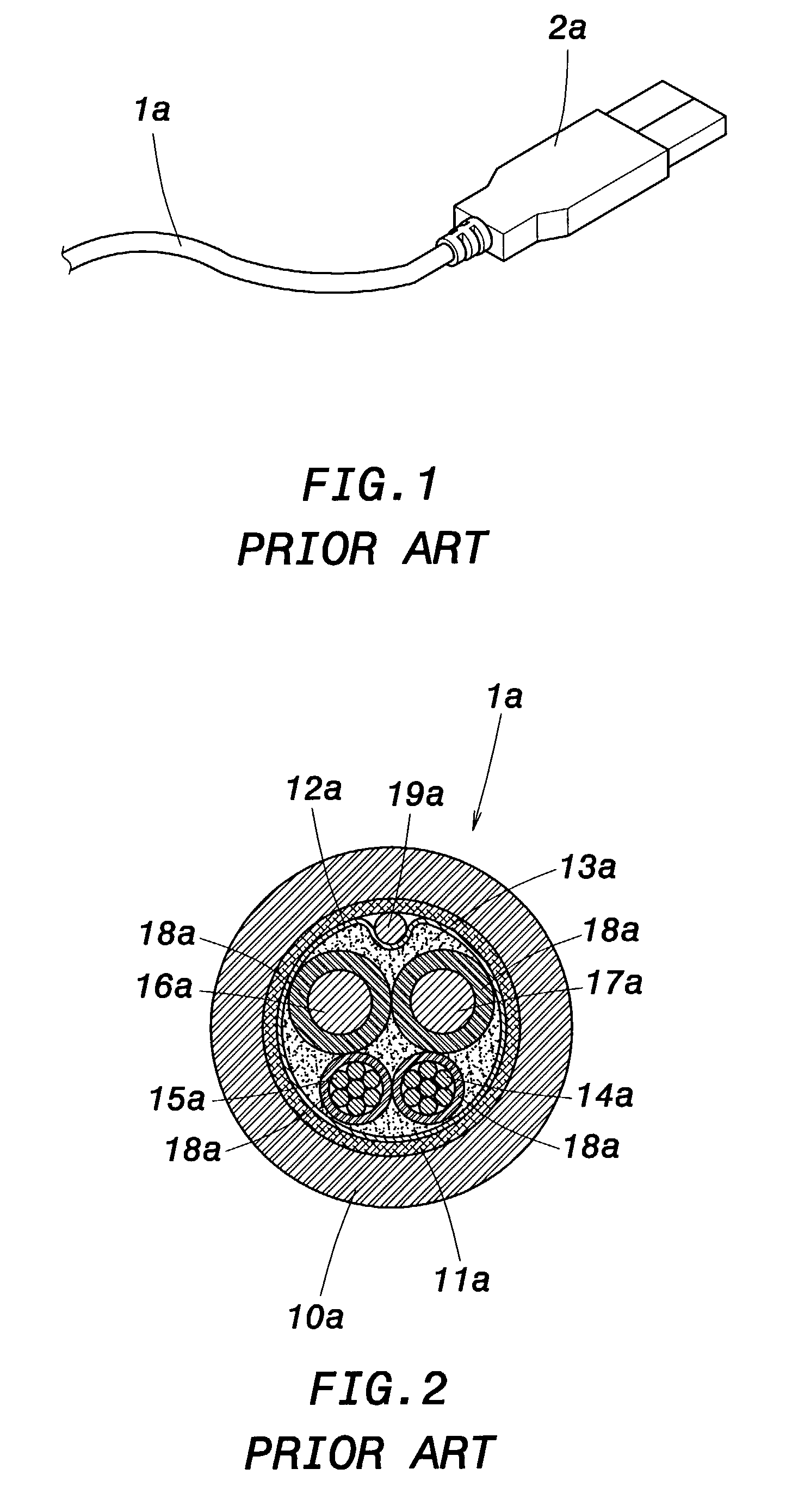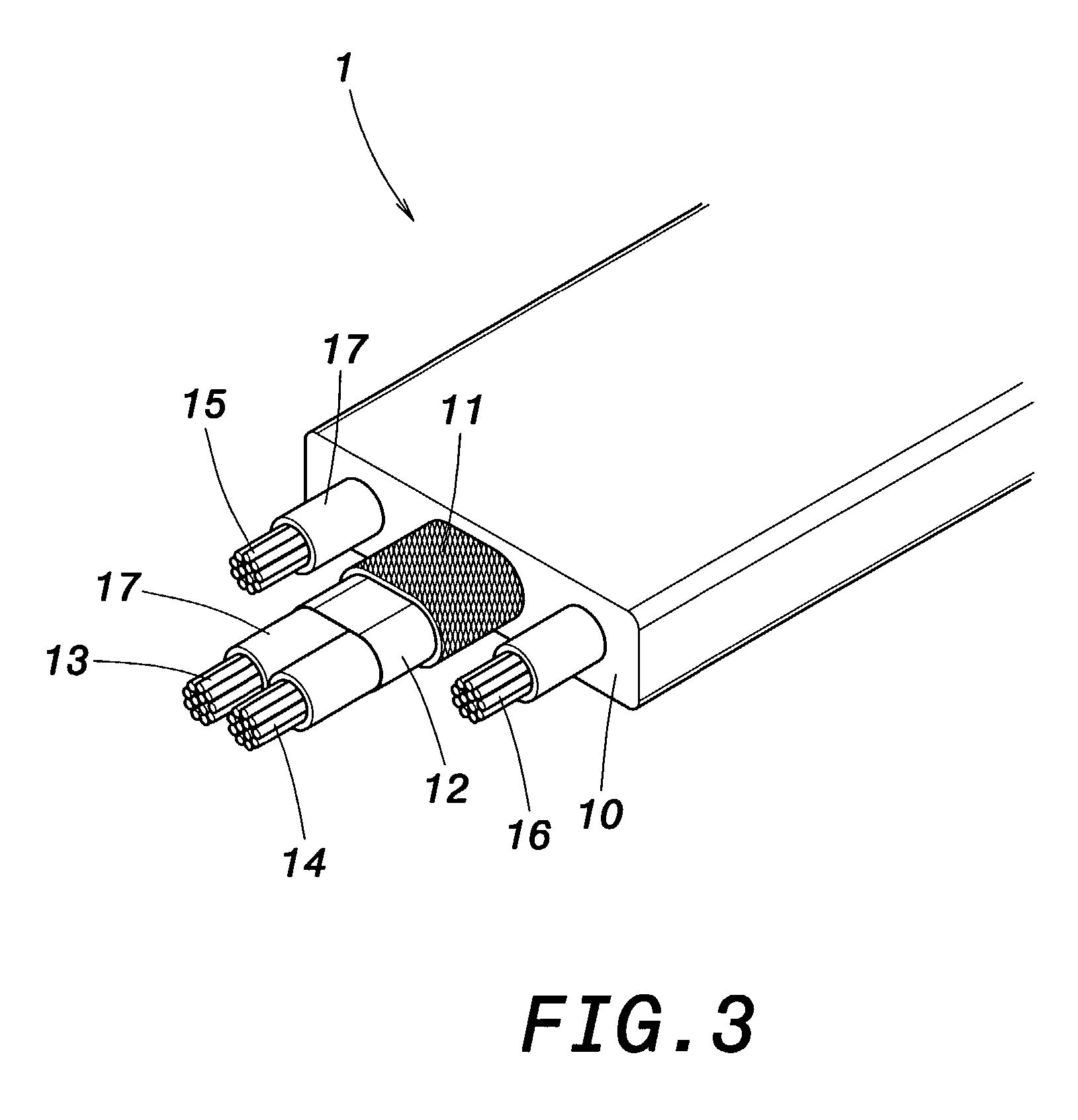Signal transmission cable structure
a signal transmission cable and structure technology, applied in the direction of cables, power cables, insulated conductors, etc., can solve the problems of additional connecting, the outer shape of the cylindrical shape of the cylindrical shape, and the inability to conveniently receive the conventional signal transmission cable in the device body, so as to reduce the manufacturing cost and good flexibility
- Summary
- Abstract
- Description
- Claims
- Application Information
AI Technical Summary
Benefits of technology
Problems solved by technology
Method used
Image
Examples
Embodiment Construction
[0018] Wherever possible in the following description, like reference numerals will refer to like elements and parts unless otherwise illustrated.
[0019] Referring to FIG. 3 and FIG. 4, a perspective view and a cross-sectional view schematically illustrate a structure of signal transmission cable according to a first embodiment of the invention. As shown, a signal transmission cable comprises an insulating body 10, a woven fabric layer 11, a tin foil 12, two signal lines 13, 14 and two power lines 15, 16. The insulating body 10 is the outmost layer of the cable 1, and is made of PVC having good thermosetting properties. Within the insulating body 10 is arranged the woven fabric layer 11 acting as anti-interference protection. Within the woven fabric layer 11 is arranged the tin foil 12 that encapsulates the two signal lines 13, 14. Around the periphery of signal lines 13, 14 is respectively arranged an insulating layer 17 made of a foam PE having good thermosetting properties. At the...
PUM
 Login to View More
Login to View More Abstract
Description
Claims
Application Information
 Login to View More
Login to View More - R&D
- Intellectual Property
- Life Sciences
- Materials
- Tech Scout
- Unparalleled Data Quality
- Higher Quality Content
- 60% Fewer Hallucinations
Browse by: Latest US Patents, China's latest patents, Technical Efficacy Thesaurus, Application Domain, Technology Topic, Popular Technical Reports.
© 2025 PatSnap. All rights reserved.Legal|Privacy policy|Modern Slavery Act Transparency Statement|Sitemap|About US| Contact US: help@patsnap.com



